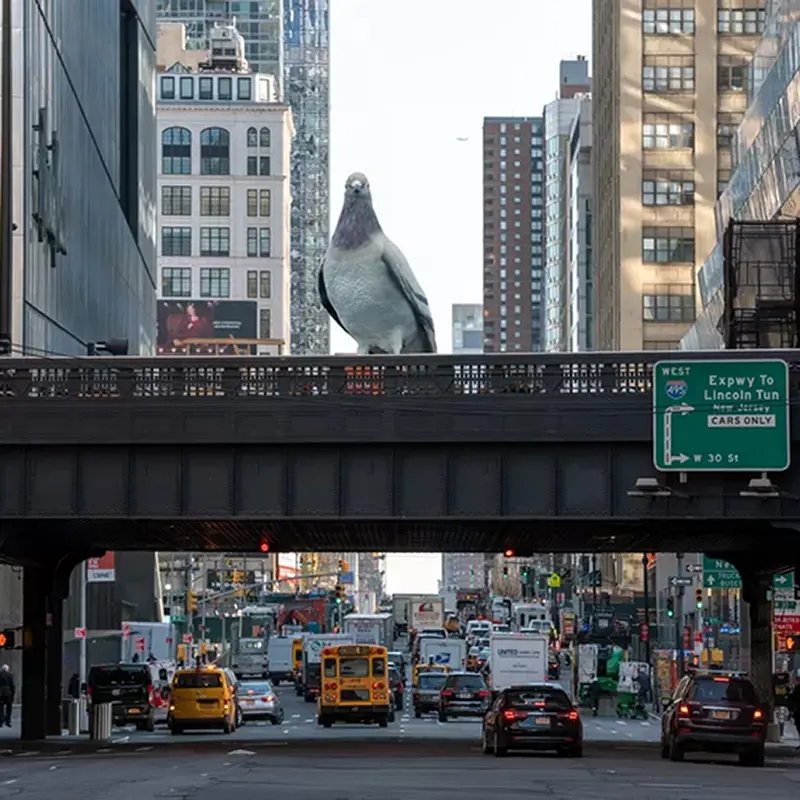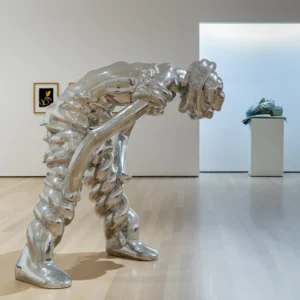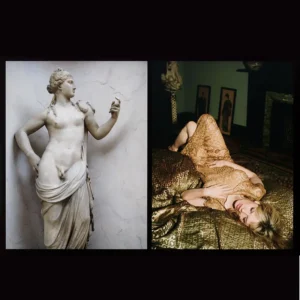The fourth commission for the High Line Plinth, “The Dinosaur” (2024) by Iván Argote, is a massive, hyper-realistic, aluminum-cast pigeon. The sculpture challenges the power dynamic between humans and pigeons, as it gazes down at pedestrians from 21 feet above.
The title refers to the sculpture’s gigantic scale and underlines the ancestors of pigeons that dominated the whole world millions of years ago. The artist aimed to point out how the dinosaurs got extinct, and one day humans might face the same fate and perish but also inquired on how a semblance of humanity might still endure, much like pigeons, in the shadowy crevices and gaps of other realms.
“The Dinosaur” will make its appearance in October, just a few months after the publication of a new version of photographer and writer Andrew Garn’s book “The New York Pigeon: Behind the Feathers.” In the introduction of the book, Garn stated that it is difficult to picture New York City without pigeons and wrote “Pigeons are our nature.”
Pigeons first arrived in the US from Europe around the 1800s. With this new urban setting, they eventually adapted to living in cities and became highly valued messengers who delivered many kinds of messages, from crucial information about work to love letters that brought couples together.
Argote points out that in a sense, everyone is an immigrant, emphasizing the birds’ origins. Even the pigeon, a familiar sight in New York, originally came from elsewhere and settled in the city, much like countless other “native” New Yorkers.
Considering the long past of pigeons, the work recognizes the contributions of these birds and satirically takes an aim on traditional monuments that honor only men, while pigeons are worthy of being honored for their services to society and put on a pedestal.
Iván Argote, the youngest Plinth artist and the first from the global south, draws on his family’s history of political and social activism to explore power, belief systems, and institutions. Through his diverse works—including sculptures, installations, films, and performances—Argote uses comedy to critique prevailing historical narratives and challenge conventional ideas of public space, proposing new symbolic interpretations.
“The Dinosaur” will be on display for 18 months on the High Line Plinth, located above 10th Avenue and 30th Street.





